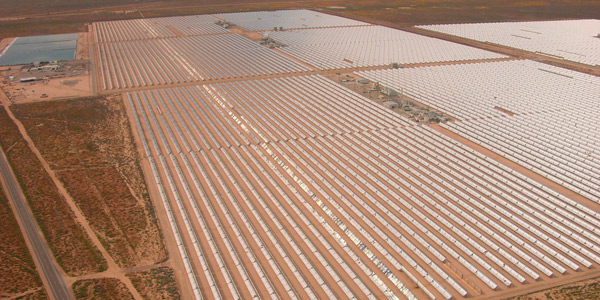By Jason Fordney
Some energy resource developers in California say CAISO needs to change its interconnection rules to prevent financially unviable projects from lingering in the queue and affecting more sound projects.
CAISO’s annual Interconnection Process Enhancements (IPE) process is becoming increasingly complex as the state’s generation mix changes, with renewables and storage comprising the vast majority of projects currently in the queue. The ISO outlined its 2018 IPE in an issue paper last month. (See CAISO Launches Interconnection Initiative.)
As part of the initiative, CAISO asked for comment on whether it should alter its Transmission Plan Deliverability (TPD) allocation, which establishes the amount of additional transmission capacity needed for projects to achieve deliverability and determines generators’ cost responsibility for network upgrades costs. Projects allocated sufficient TPD receive reimbursement for their upgrades. CAISO uses a point system to allocate TPD based on project status, including the status of project financing, power purchase agreements, regulatory approvals, land acquisition, and other factors.
CAISO’s current process provides interconnection customers with two annual opportunities for earning TPD allocations following Phase II interconnection studies and after one year of parking in the queue. Under revisions filed with FERC, which the ISO says are likely to be approved, a third annual opportunity for a TPD allocation will be made available to interconnection customers following a second year of parking. Projects that don’t qualify for a TPD allocation following the three opportunities must convert to energy-only status — making them ineligible for resource adequacy payments — or withdraw from the queue.
In its comments to CAISO, Southern California Edison (SCE) said it opposes allowing projects to remain in the queue indefinitely and to have endless opportunities to apply for deliverability status.
“Such projects remaining in the queue open-endedly without making progress towards their commercial operation negatively affect other active projects,” the company said.
SCE said projects not allocated TPD by the end of the second parking period should be required to execute the agreement and proceed as energy-only or be suspended, allowing for a three-year period during which they retain priority for TPD allocation. Two parking periods and a three-year suspension should be adequate, the utility said.
Differing Opinions on TPD Allocation Changes
Utility-scale developer First Solar said that forcing projects into “energy-only” status and large forfeiture amounts that become due if a project withdraws might incite developers to choose energy-only status rather than depart the queue. The company said the issue is compounded by a lack of transparency of available deliverability at interconnection points on the CAISO grid.
“Deliverability is critical for marketing a project, as energy-only projects currently are less appealing due to their lack of resource adequacy attribute and are therefore less competitive in procurement,” First Solar said. “We ask the CAISO to address several issues that prevent interconnection customers from being allocated or retaining deliverability, as well as issues that have impacts on others in the queue.”
But the state’s Office of Ratepayer Advocates (ORA) said it did not support changes to the current TPD allocation process that allows three opportunities for TPD allocation, rather than allowing projects to remain in the queue indefinitely.
“Changes in the queue procedures should only be considered for resources that meet project area needs, support state resource targets or CAISO-controlled grid needs, such as resources that can respond to grid demands throughout the day and/or provide additional services in addition to energy,” ORA said.
The California Wind Energy Association said that with the third allocation option on file at FERC, “there is no need to tinker with the TPD allocation process. We suggest that this IPE element be tabled.”
Independent transmission company ITC said it supports inclusion of the possible TPD changes in the scope of the 2018 IPE stakeholder initiative as part of its “broader support” for studying the impacts of allowing projects with potentially limited commercial viability to remain in the queue and seek TPD allocation.
ITC also recommended the initiative further examine “how identified impacts of an interconnection request on neighboring systems are coordinated and mitigated” to “consider additional clarifications to Affected System practices.”
The company pointed to FERC’s recent order on a complaint by the Environmental Defense Fund regarding MISO, PJM, and SPP Affected System studies. Earlier this month, the commission ordered a technical conference after finding the RTOs’ tariffs and joint operating agreement do not fully explain the guidelines and timelines that the RTOs use to coordinate with other affected systems during the interconnection process. (See FERC Orders Review of PJM, MISO, SPP Generator Studies.)
As of Jan. 1, the ISO’s interconnection queue contained about 43,000 MW of proposed generation, including about 28,000 MW of renewables, 12,000 MW of storage, and 2,800 MW of other resources, documents show.





